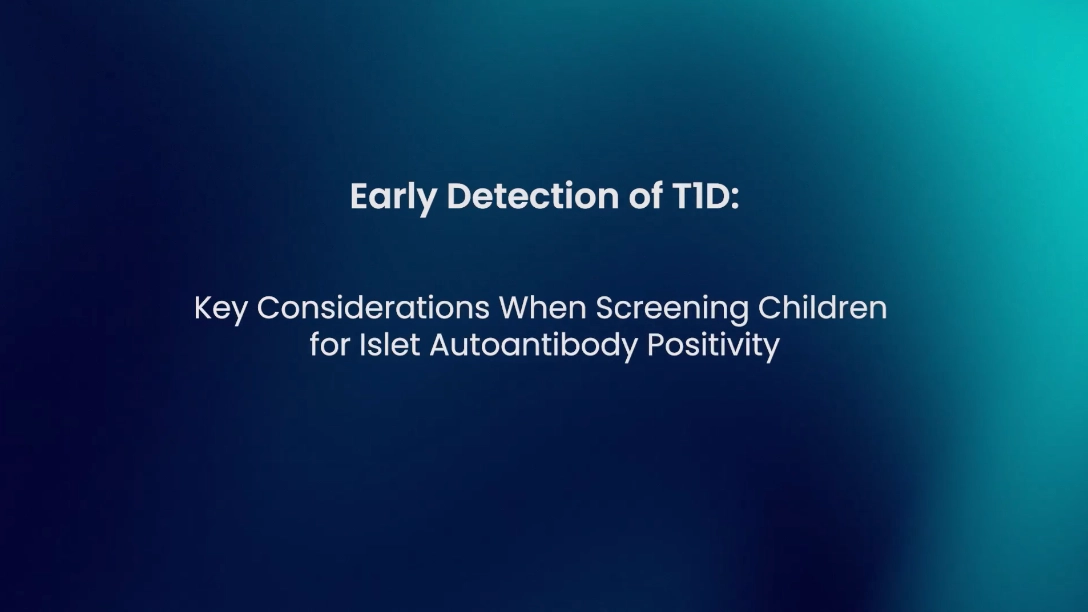- Resource
- BR1DGE
- Early Detection
- Video
Early Detection of T1D: Key Considerations When Screening Children for T1D
Expert interview discussing the benefits of T1D screening and communication strategies employed when highlighting the importance of T1D screening
-(1).png/jcr:content/1190x500_Early%20Detection%20of%20T1D%20Considerations%20around%20screening%20children%20(Expert%20Interview)%20(1).png)
Learning Objectives
- Recognize the potential benefits of early identification and monitoring of T1D
- Describe strategies to communicate the importance of T1D islet autoantibody screening

Summary
Early identification and monitoring of T1D offers substantial benefits, particularly reducing diabetic ketoacidosis rates upon diagnosis. Research indicates early identification may lower hemoglobin A1c levels, potentially decreasing the risk of long-term complications. Early detection gives families valuable time to adjust emotionally to the diagnosis and make more informed management decisions rather than facing a sudden onset. The screening process allows for a more gradual transition to treatment, creating opportunities for education before symptoms develop. A key message for families could be that screening ultimately contributes to finding a cure for T1D.
MAT-GLB-2501241-1.0 - 04/2025

.jpg/jcr:content/thumbnail-Medhub%20(1).jpg)

